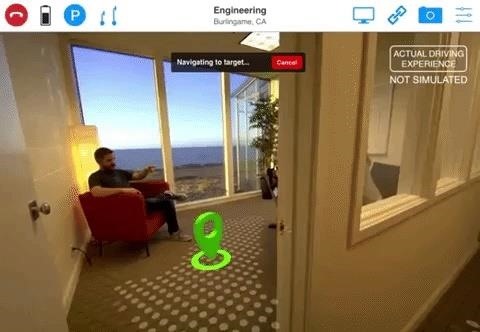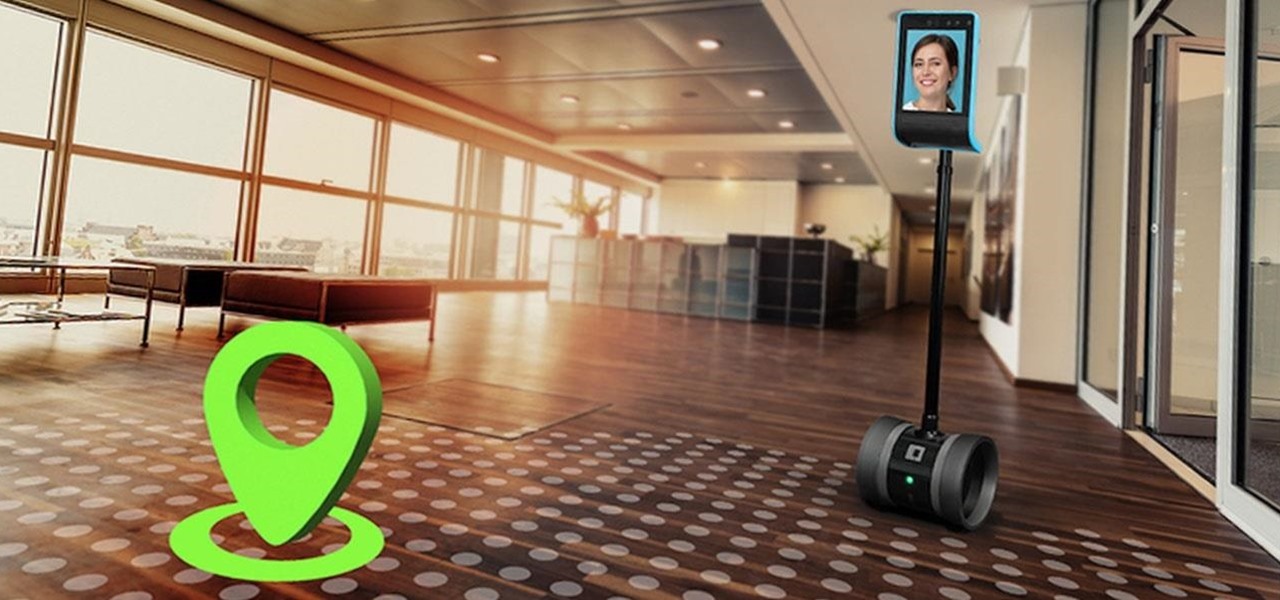Until Star Wars-style 3D hologram projection technology becomes commonplace, the near future of certain kinds of remote work is in robotics. Now, a new dynamic is using augmented reality to give this kind of telepresence a kind of superpower.
This week, Double Robotics unveiled the Double 3, the company's latest telepresence robot, and this updated, self-driving model comes with an integrated AR interface.
For the uninitiated, you can think of Double's telepresence robots as equal parts iPad tablet, obstacle avoiding home robot Roomba, and self-balancing Segway (just in terms of execution, those brands aren't actually a part of the company). This combination of technologies allows a person to remotely drive a camera/screen combo around an office as a way to communicate and collaborate with colleagues remotely.
"Double 3 represents a massive leap in technology for offices and schools, and it finally incorporates all of the top requests from our customers into one seamless, elegant solution," said David Cann, the co-founder and CEO of Double Robotics, in a blog post on the company's website.

Using a Double device allows a remote worker to do everything from zoom in on a presentation to get a better look, to offering their two-cents at the meeting via the built-in amplified speaker.
The new Double 3 model is unique compared to prior Double telepresence robots in that it can now drive itself. Through an array of 3D sensors, the Double 3 can sense its environment, which facilitates built-in obstacle avoidance in the device's system. Therefore, even a novice Double driver can operate the robot without fear of bumping into people or Ming vases atop thin pedestals.

Priced at $3,999, the Double 3's new AR display also shows the user 3D virtual waypoints and objects of interest, such as the location of the robot's charging dock. Also, while using the AR mode, the robot displays dots on the floor where it senses it can safely go.
One important aspect of this system, called click-to-drive, lets the operator simply click a point on the AR-enhanced floor to have the robot navigate itself to a particular location in the room.

Other features the Double 3 has over the previous model, the Double 2, is that it no longer requires an iPad for operation; the screen and camera are built-in. There are also six beamforming microphones that help the driver hear people from a distance, while also working to eliminate background noise.
The robot's audio system also delivers full duplex audio, which allows you to hear someone speaking to you even while you're talking to them (a frequent issue when people attempt to conduct meetings via standard speakerphones, which results in participants inadvertently speaking over one another). You can even control the height of the screen, simulating a seated or standing position.
With four hours of battery life (and two-hours needed to charge up) remote workers can use the system's AR functionality to navigate their way around their entire office with point-and-click ease.
So while this particular example doesn't include a headset or smartglasses, it's nevertheless another great example of augmented reality helping to shrink the learning curve when working with new technologies.
Just updated your iPhone? You'll find new features for Podcasts, News, Books, and TV, as well as important security improvements and fresh wallpapers. Find out what's new and changed on your iPhone with the iOS 17.5 update.























Be the First to Comment
Share Your Thoughts